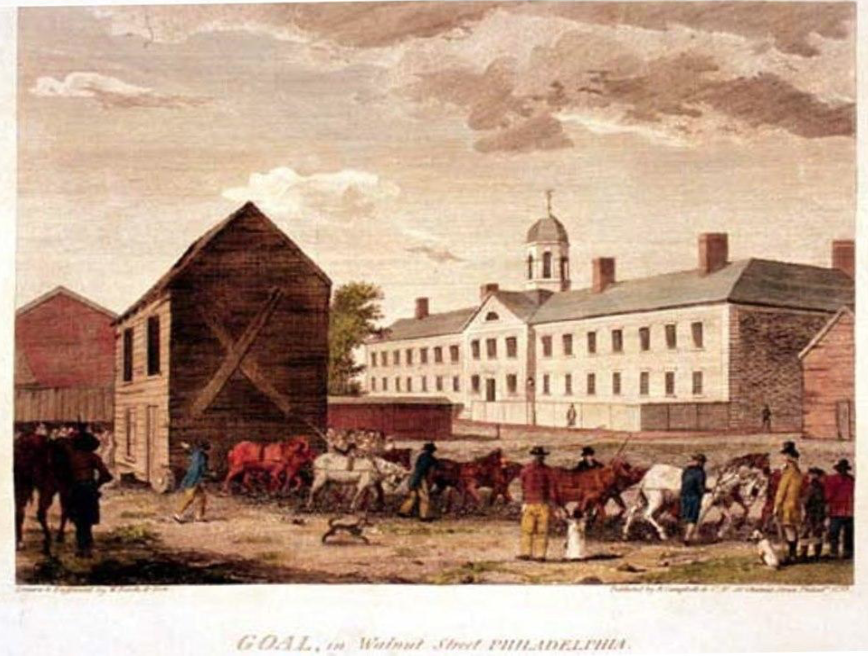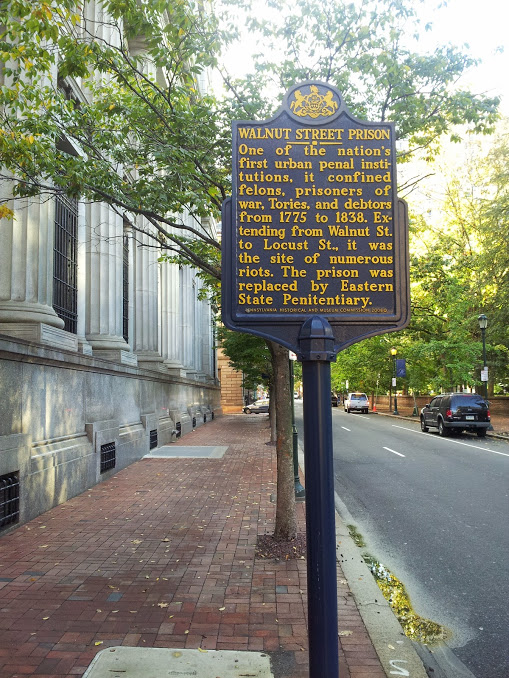7.6 A Brief History of Prisons and Jails
David Carter; Michelle Holcomb; and Kate McLean
The Growth of Jails in the United States
The concept of a jail (goal – old English spelling) is yet another concept that we have carried with us from England. Much as in that country, jails are local establishments, originally managed at the level of colonies, and now largely operated out of counties/parishes. In their history, jails have gone by various names, depending upon their function and use, such as “Bridewells” and Workhouses. The first colonial jails differed in their operation and functionality from those that we use today. Namely, jails prior to the late 18th century did not function as a form of punishment but were rather used to (1) hold individuals awaiting trial or execution, or (2) detain debtors, the contagiously sick, those with severe mental illness, and other dependent individuals. Moreover, jails in this period were privately operated, for profit, with no public oversight and absolutely “no frills” – detainees may have been required to provide their own food, drink, clothing, and medication, if not asked to pay for their own stay. The deficiencies of this system – wherein detainees were ill-treated and often escaped – were first addressed in the construction of the Walnut Street Jail, which opened in 1790. Opening around 1790, this facility housed both jail inmates and, at some points, in time convicted offenders.

Later labeled as a prison (as depicted by the historical marker below), the Walnut Street Jail became the blueprint for later prison construction, which will be discussed in the latter half of this chapter.

As the United States began to increase in population, county/parish lines were drawn up within newly established states. Sheriffs began to police their counties/parishes, and also became responsible for managing the lower level infractions (misdemeanors) within their jurisdictions. In this way, county/parish jails began to multiply within the United States. Initially, many jails were nothing more than parts of a Sheriff’s office – literally, cells in a back room. Today, large structures (even multiple structures in a single county) constitute jails in the United States. Still today, the vast majority of jails are small in size. And while there are few larger jails, they increasingly hold more individuals – a potential problem within facilities that are mostly populated by those awaiting trial, who haven’t been convicted of a crime. Overall, pretrial detainees represent roughly 81% of all local jail inmates in the United States, while the remaining 19% are individuals who have been sentenced to less than a year of incarceration (or less than two years, in some jurisdictions, such as Pennsylvania) (Sawyer, 2022). At this point in history, jails hold three primary functions: (1) to hold individuals prior to trial; (2) to hold individuals serving short(er) sentences, typically for less serious crimes; and (3) to hold individuals awaiting transportation to another institution.
A locally operated correctional facility that houses offenders both before and after adjudication.

